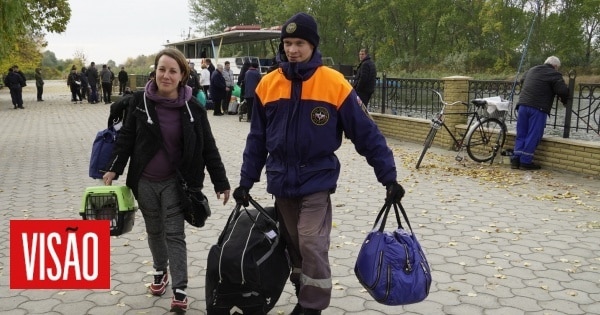“We are going to resettle and transfer up to 70,000 people” who are currently in a strip 15 kilometers to the east on the left bank of the Dnipro River, said the governor stationed there by Moscow in Kherson, Vladimir Saldo, on the Russian radio program Solovyov Viver.
Last week, Russian occupation forces announced that 70,000 civilians had left residences located to the west on the right bank of the river and closer to the front line.
Saldo said that the new withdrawal operations were decided in view of the risk of a “possible missile attack” against a dam located on the river and whose destruction would lead to “the flooding of the left bank”.
“We have already started” these new operations and people will be transported to locations further away from Kherson or to “other regions of Russia”, said Saldo, without elaborating.
On Monday night, Saldo said the withdrawal would also allow the Russian army to mount a “defense to repel the Ukrainian attack”, alluding to the possibility of Kiev’s forces crossing the Dnipro.
The Kherson region is partially controlled by Russia, which in October annexed the part it conquered, along with three other areas of Ukraine under its control.
Ukrainian troops have been carrying out an offensive for several weeks to retake the Kherson region, advancing from west to east.
In mid-October, due to territorial conquests made by Ukrainian soldiers, the Russian occupation authorities asked the inhabitants of the right bank to leave their houses to cross the river.
However, in Kiev, the supply of water and electricity has been “fully restored” throughout the city, a day after Russian attacks affected distribution plants, said the mayor of the city, Vitali Klitschko, on the social network Telegram.
Intense Russian attacks on Ukrainian infrastructure have deprived 80% of the city’s inhabitants of water and cut power to 350,000 homes.
The military offensive launched on February 24 by Russia in Ukraine has already caused more than 13 million people to flee – more than six million internally displaced people and more than 7.7 million to European countries – according to the latest data. of the UN, which ranks this refugee crisis as the worst in Europe since the Second World War (1939-1945).
The Russian invasion — justified by President Vladimir Putin with the need to “denazify” and demilitarize Ukraine for Russia’s security — was condemned by the generality of the international community, which has responded by sending weapons to Ukraine and imposing political and political sanctions. economic.
The UN presented as confirmed since the beginning of the war 6,430 dead civilians and 9,865 wounded, stressing that these numbers are far below the real ones.
JSD // EA

